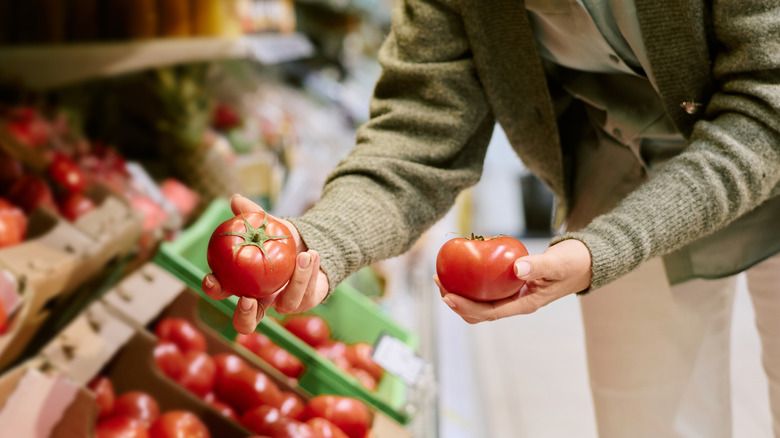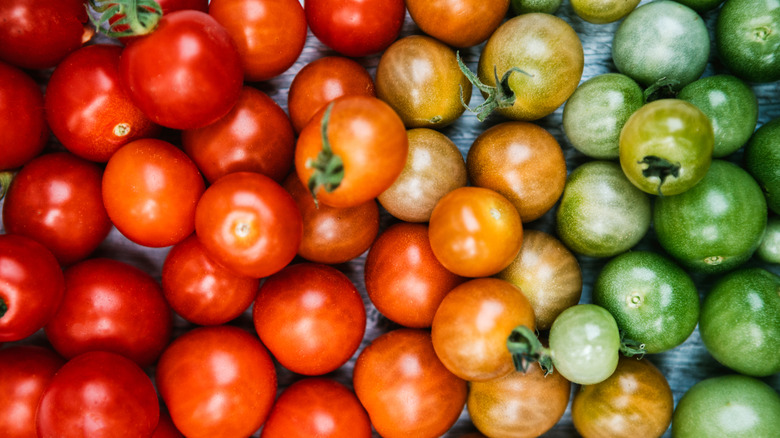What To Look For When Buying Tomatoes At The Grocery Store
Practice makes perfect, so it'd be easy to assume that most adults would be experts at always picking the best grocery store products. After all, shopping for food is part of a weekly ritual that we're bound to do from the second we leave our parents' home until the moment we leave this planet — it's sort of like paying taxes except you can't evade it by leaving the country. Although we should all be savants in the art of the produce aisle, most people are still woefully clueless. Some of us might get to old age and still not be sure of fruit choices, or how to pick the crispest onions. Or, we might be unsure of how to pick tomatoes at their prime. To avoid this last scenario, The Takeout spoke to Matt Harding, chief innovation officer at Piada Italian Street Food.
Buying a tomato that's past its best-by date may be the worst tomato mistake, since there really isn't much you can do to improve its taste or texture. Harding points out several telltale signs of this unwanted life stage, including visible bruising, really loose skin, and moisture. If the tomato feels too soft when you touch it, you might want to reconsider buying it. Of course, if you're looking to make homemade pasta sauce, then you'll want overly ripe tomatoes. Even in this case, Harding advises checking for fruit flies in the area to ensure the product remains safe for consumption.
How to avoid buying underripe tomatoes
Underripe tomatoes are not always a huge problem, since you can just leave them in the fridge and wait for them to ripen. But if you're buying groceries for a meal that you plan to consume that very same day, tomatoes that aren't ready to be eaten can be a nuisance. Depending on what you're planning on making, this mistake could ruin your entire meal.
Harding provides an easy way to know if a tomato is ripe. "Look at where the tomato was attached to the plant. The less green in that area, the more ripe the fruit is," he advises. Harding explains, "The inside of the crown is covered by the leaves and naturally would be the last spot to ripen."That's easy enough. Picking the tomato up and seeing if the texture gives a bit but not too much is another simple way to test for ripeness.
Harding also suggests looking for tomatoes grown as close to your location as possible, even if they're hydroponic. "The longer the tomato has had to travel, the less ripe it was when picked. Natural hybridization has also taken place to make sure the tomato can turn 'ripe' without a ton of flavor." When you buy more locally, you can get nutritious, flavorful tomatoes.
Finally, it's always a good idea to become familiar with tomato varieties and the recipes for which they are best suited. This will help you have the right tomato texture for the recipe you have in mind.

